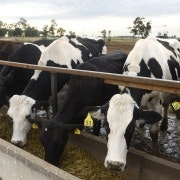Easing OneSteel's heavy metal headache
A day after its former BHP sibling reported a $530 million loss, OneSteel too has produced a result dripping with red ink. Unlike BlueScope Steel, however, OneSteel isn't desperately scrambling for stability and a future.
While the December half loss of $74 million might suggest otherwise, the headline numbers disguised a reasonable performance in the difficult circumstances confronting the Australian steel industry. OneSteel says its underlying net profit from continuing operations for the half was $78 million.
The big difference between BlueScope and OneSteel is that BlueScope is completely exposed to the global and domestic steel markets, where demand is soft, raw material prices have soared and the Australian dollar remains at near-record levels. That has forced a painful and costly retreat from export markets and a massive and continuing restructuring of BlueScope's domestic operations.
OneSteel isn't immune to what has been happening in the domestic market. Its steelmaking and distributions businesses, which lost $85 million in the December half of 2010, lost another $84 million in the latest half for mostly the same reasons that have kept BlueScope heavily in the red.
But OneSteel is no longer primarily a steel company, a reality that the company wants to reinforce by changing its name to reflect the extent of its evolution away from its roots.
The 2005 decision to vertically integrate by developing an iron ore business has proven critical to helping to insulate OneSteel from the full force of the confluence of issues that destabilised BlueScope and its own steel businesses while its diversification into grinding media has also helped mute their impact.
Less than five years ago OneSteel was fundamentally a steel company, with 92 per cent of its assets devoted to the sector. Today that proportion has been almost halved, to 47 per cent and falling, with mining accounting for 16 per cent and mining consumables 28 per cent. As the new iron ore mine OneSteel acquired from WPG Resources last year for $346 million comes on stream, mining will become an even bigger contributor to the group.
The contribution from the group's mining operations actually fell 38 per cent in the half as a result of slightly lower volumes and grades and the sharp fall in iron ore prices late last year. Prices have since recovered some of that lost ground, although they remain below their peaks.
With a doubling of OneSteel's port capacity at Whyalla underway, and first production from the new Peculiar Knob project scheduled for the last quarter of 2012, OneSteel will significantly increase its iron ore export volumes.
In the mining consumables business, earnings before interest and tax were up from $21.1 million to $65.2 million, aided by the $US932 million acquisition of the Moly-Cop grinding materials business from Anglo American in late 2010. That's a world-leading business where OneSteel is investing solidly.
The growth in the two newer divisions is leveraged to the resources industry and consequently exposed to fluctuations in demand from China. There is something of an effective hedge now built into the relationship between the group's steelmaking and distribution businesses and those exposures, a hedge that BlueScope unfortunately doesn't have.
OneSteel hasn't given up on the steel businesses, forecasting volume growth of about five per cent in the second half on the back of increased infrastructure and mining activity in an otherwise flat market.
Prices and margins will, however, continue to be volatile and driven by conditions in the global steel industry and the direction of the Australian dollar. OneSteel expects positive earnings before interest, tax, depreciation and amortisation in its steelmaking operations in this half.
For both OneSteel and BlueScope, the wrenching and continuing restructurings of their steelmaking and distribution operations that was forced by the onset of the global financial crisis does position them well for any improvement in domestic demand, with leveraged exposures to any significant recovery.
Both of the companies see some small signs that better conditions are emerging, both in the domestic environment and offshore, where steelmakers have also withdrawn capacity. A better balance between capacity and demand appears to be developing, which would relieve some of the hitherto unrelenting pressure on their steel businesses.
















